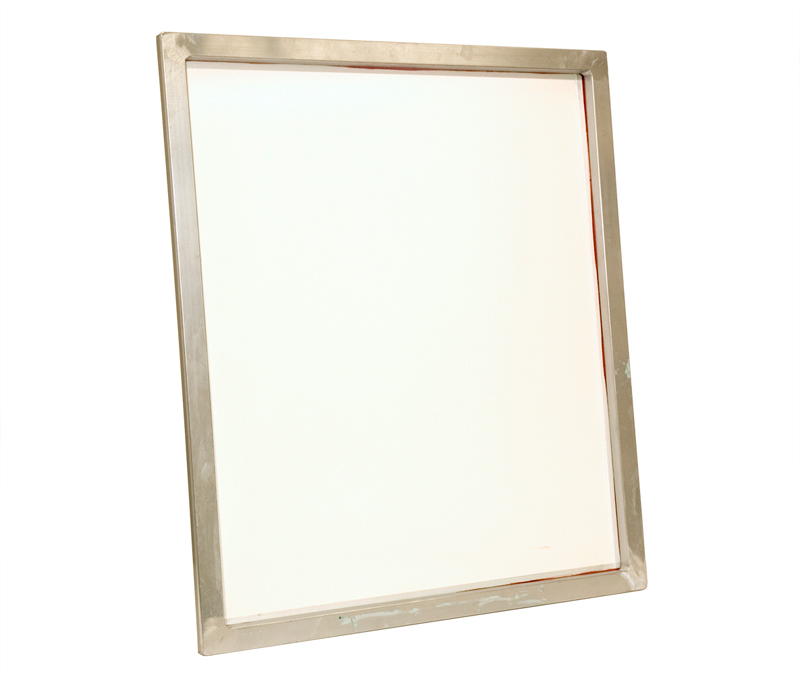Screen Frame
スクリーン枠
Screen-waku
CATEGORIES
A screen frame is the frame on which a mesh (made of tetron, nylon, silk, etc.) stencil for screen printing is stretched. The frames come in various sizes but they must be slightly larger than the actual image to be printed (image size) because a squeegee is used on them to transfer the image.
The frames can be made of aluminum, wood, iron, etc. When screen printing originally began, it was most common to use a wooden frame. However, wooden frames can become warped and distorted after many years of use. Iron frames are sturdier but are hardly ever used nowadays because they are heavy and difficult to manipulate. For these reasons, aluminum frames are commonly used today as they are sturdy, durable and less prone to distortion.
The frames can be used repeatedly by replacing the mesh. There are companies that specialize in re-stretching mesh onto frames using a machine called a screen stretcher, but you can also re-stretch a frame yourself. The main steps are as follows: Apply a powerful adhesive, either for use with metal and rubber or sold specially for use on screens, on the surface of the frame. After drying the adhesive completely, cover the frame with a mesh which is slightly larger than size of the frame. Melt the adhesive with an iron and use screen stretching pliers called “Hippaler” to stretch the mesh tightly with equal tension. The mesh should be pasted onto the 3 corners first, and then gradually pasted over the rest of the frame. Unless the mesh is stretched with appropriate force, it can become loose or be torn.
Screen frames can be purchased at art supply and printing supply stores selling printmaking tools.

